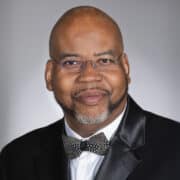I still have a copy of the first performance review I got more than thirty years ago from my boss at Mellon Bank. He said that I seem to shoot from the hip, somehow always hit the target, and wind up landing on my feet. I’ve not always been 100 percent successful, but I seem to know when something will work . . . especially in technology and financial services. I’ve just never believed that I’m going to fail. That doesn’t enter my mind.
I started at Mellon in 1978 and completed their programmer training program before moving to the development group. I had expanding roles in various banks over time and eventually left technology to go to the business side. By 1990, I had saved enough money to start my own company, which had been a dream of mine. A company called Safeguard Scientifics asked me to run one of their portfolio companies, but I said no because I had that dream. They managed to convince me, though. I remember the founder said I might as well learn on his dime and run my own company later. He was right.
I walked into that business when it had $4 million in revenue and was bleeding $1 million a month in cash flow. It had no easily referenced customers and was written up in the Wall Street Journal as the largest software fiasco in banking history. There was $50 million in outstanding lawsuits. Everyone thought I was crazy to get involved, but I knew I couldn’t make it much worse. Eighteen months later, we had turned it around and made it profitable and cash positive with revenues close to $40 million by the time Safeguard sold it in April of 1997 to SunGard, and I took the rest of the year off. Apparently I was driving my family crazy, because we had a family meeting during which they told me that I had equity in the family but my shares carried no voting authority. It was language I understood . . . They sent me back to work.
I was consulting and running a small incubator with a small number of companies when some colleagues asked me to accompany them to a meeting with a credit union that needed a collection system. I decided to tag along. I asked why they wanted to build something instead of making a purchase and found out there was nothing on the market. There were no web-based collection systems. I went back to the credit union and told them I’d build it, I’d take the risk, and I’d finance it. I would own it and license it to them for use. They agreed.
That’s what started Akcelerant, and today we serve more than 600 financial institutions. In fact, 40 percent of all credit union members in the United States are processed on our software. It resonated with credit unions because we took our time building it and worked closely to understand their requirements. I had been a part of building systems for years, dating back to the start of my career. My greatest experience came from running that software company that I turned around, and I’m so thankful I did that instead of leaving to start my own thing then. It made me understand what it takes to run a software company with all its various components. When you’re in a bank or company, you might have some depth, but you don’t understand how to put an infrastructure around that to run a company with sales, customer support, and marketing. That education was invaluable.
In 2008, after five years of growth, I knew we were starting to saturate the market because 60 percent of all credit unions over $1 billion in assets were running our software. I found another industry need in origination and started looking at software to generate loans. I approached a client that had built its own software, and we acquired that program, using it as a template to rewrite our own software from scratch. Having both sides of software—this new origination program and our original collection program—keeps us relevant. Then in 2009, we bought our main competitor in the collection business. In 2012, we purchased profitability software that helps create a 360-degree view of a financial institution account holder. Our vision is to keep building that out with big data and analytics.
We’ve run this company as if it was a bigger company from day one. We’ve always had the right procedures and policies and the right audits and financial info. We spent time up front to build the right foundation of policies, procedures, and processes. We value culture and spend a lot of time making sure our employees fit here. Most recently, I promoted someone to president and COO. This decision will help us move into the future as I continue to focus on strategy and vision.














